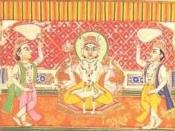The Blake Prize is an Australian national based art competition where the artists create masterpieces with religious contributions, themes and images. The prestige of the 'Blake' has been founded on its independence and its committed encouragement of contemporary artists. The Blake Prize has been very successful considering that there are no secure sources of funds; the Blake Prize relies on yearly donations and the efforts of volunteer workers. There are no paid staff, and the continuation of the Society's activities is a tribute to the prestige it is held in the community.
What are the aims of the Blake prize?
The Blake prize was established in 1949 in Sydney. It was brought about by a wide variety of people from varying religious backgrounds. The committee of clergymen, laity and artists aimed to draw a sense of connectedness between religion and art. They conceived the idea of founding a prize for religious art, which would attract contemporary artists and so restore the split relationship between religion and art, which has been traditional in the past.
To this day the same understanding of the purpose of the Blake still exists today. The aims of the Society were specifically to encourage contemporary religious art. The widest interpretation of 'religious' was sought to reflect the diversity of beliefs of the founders, and 'art' was taken as the visual arts due to the difficulty of comparative assessment of them with performing and literary works.
What were the traditional views of the art submitted for the competition?
In the early years that the Blake Prize Christianity was the main subject and theme throughout all the participants works. Traditional views from these art works are many images of Jesus and different passage from the bible that are well known for example, the 1961 winner Stanislaus...



Nice!
Very informative essay! It's nice to see people writing about something not discussed everyday. This is definitely educational as well.
Great Job!!
2 out of 2 people found this comment useful.